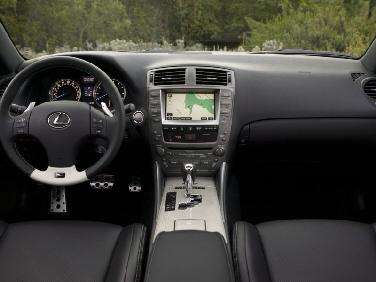Recent Articles
Popular Makes
Body Types
What Is Odometer Fraud?

A vehicle’s odometer sits somewhere on the dash, in clear view of the driver. The odometer records the miles the car has traveled since leaving the factory, and in turn, reveals the vehicle’s use. A lower number reflects that a vehicle has been used little. A higher number means the car has been heavily used.
Mileage plays a key factor in a car’s value. A car with lower miles brings a higher price in the marketplace than one with higher miles. This simple law of the marketplace and an odometer’s vulnerability mean that if a high mileage vehicle can have an odometer rollback, the car will bring a higher price. Thus was born odometer fraud.
Odometer fraud has plagued the used car market since the first odometers were installed. Odometer tampering is a problem that persists today, and buyers must take their time and wear their glasses to detect if a car has been “clocked” because the clues are subtle, and the professionals who odometer wollbacks as a matter of business rarely leave any evidence.
As always, a well-educated buyer knows what to expect and what to look for in a used vehicle. The buyer should also have an idea of how the vehicle should look and perform with the advertised miles. Special attention should be paid to the dash and to the odometer itself. If screws to the dash are loose or missing, odometer rollback may have happened. If the numbers themselves in the odometer are misaligned or the wheels look scratched, the car may have had some odometer tampering. Then there are the few common sense clues regarding odometer fraud.
A three-year-old car with 20,000 miles on its clock should have its original tires and most of its original parts. The tires should have some wear. The hoses and water pump and alternator should be original. A fresh set of radials, a new alternator or water pump may indicate the car has run 120,000 miles and has had the first digit of its odometer changed.
The service records of the vehicle should indicate the proper progression of mileage also. If the odometer says 80,000 and a receipt for the last oil change says 90,000 miles, something is wrong. The same goes for checking service stickers under the hood or on the door jams. The numbers should match and confirm the mileage on the odometer.
Some may think that digital odometers may present a better degree of security because the mileage data is stored in the vehicle computer’s control module. Anything made by a human can be manipulated by a human, and a good criminal needs only a laptop computer and a set of codes to commit odometer tampering.
As with most vehicle fraud, the longer a car has been trading owners, the more opportunity arises for the odometer fraud. Cars crossing state lines, cars moving through auction houses and wholesalers all fall in line for a little adjustment to increase their value the next time they come up for sale. The final buyer may never know if the was odometer rollback done by the third or fourth or tenth owner.
Of course, there are odometer fraud penalties. In most states, odometer tampering is a crime and if the odometer rollback results in a buyer losing more than $300, then it is considered Grand Theft is odometer fraud becomes a felony that can result in prison time. Sadly, there are individuals who don’t mind the threat of odometer fraud penalties and continue to attempt to raise the value of cars by committing odometer fraud.
One last word on odometer fraud: it must have intent to defraud. Millions of cars have broken or faulty odometers. If the seller discloses that the odometer has some problems, no odometer fraud has occurred.